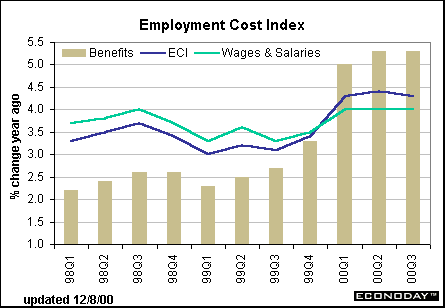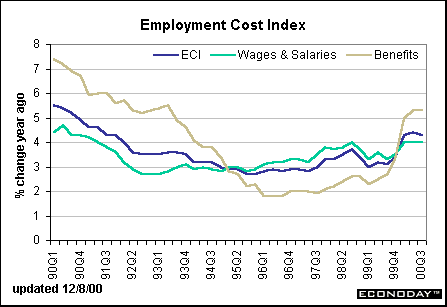The employment cost index picked up steam in the first and second quarters as health care costs surged (reflected in the benefits series). Wages didn't rise as rapidly. As of the June 2000 report (released in late July) the Labor Department is including figures for referral and hiring bonuses Retention bonuses were already included in the data. The Labor Department is also researching ways to incorporate stock options as a method of compensation. Third quarter compensation costs rose at about the same pace as the previous two quarters.
Long Term Perspective
Pool of Available Labor • Nonfarm Productivity • Treasury Yields • Stock Prices • Humphrey-Hawkins Actions |
|||

